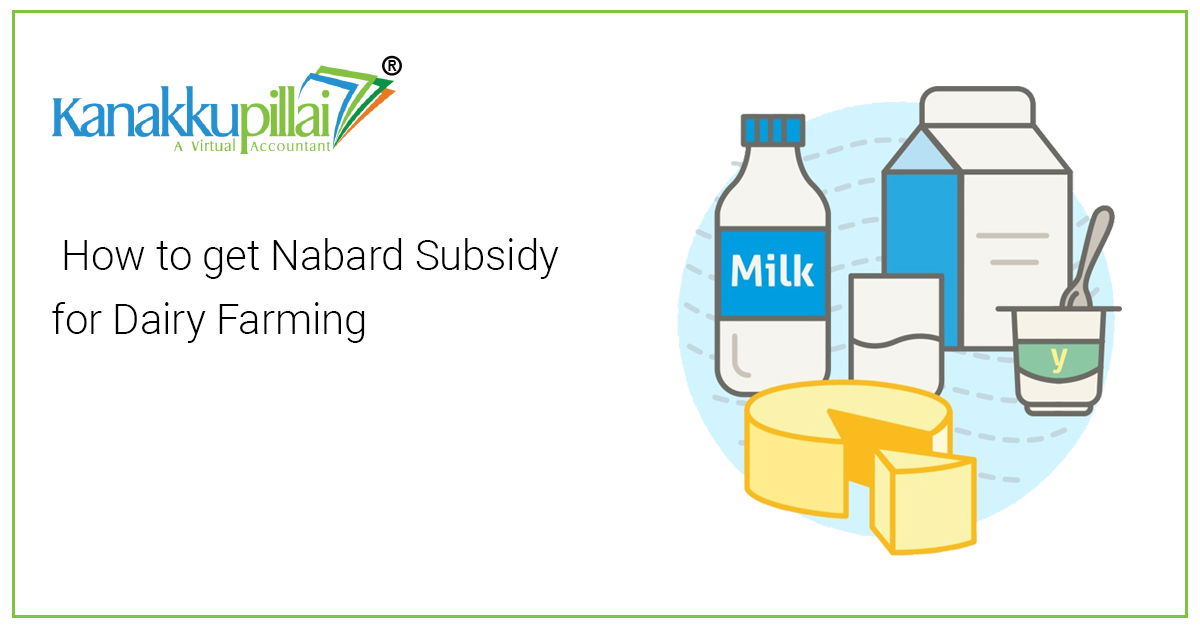How to get Nabard Subsidy for Dairy Farming?
Dairy farming is a large unorganized sector in India and a major source for livelihood in rural areas. In an effort to bring in structure into the dairy farming industry and provide assistance for setting up dairy farms, the Department of Animal Husbandry, Dairying and Fisheries launched the “Venture Capital Scheme for Dairy and Poultry” in 2005. The scheme provided for interest free loans for setting up dairy units and as of 31st March, 2010 nearly 15,268 dairy farms enjoyed interest free loans to the tune of Rs.146.91 crores in India. Following the success of the Venture Capital Scheme for Dairy and Poultry, the Government in 2010 decided to launch the Dairy Entrepreneurship Development Scheme through NABARD.
- To promote setting up of modern dairy farms for production of clean milk
- To encourage heifer calf rearing thereby conserve good breeding stock
- To bring structural changes in the unorganized sector so that initial processing of milk can be taken up at the village level itself.
- To bring about up gradation of quality and traditional technology to handle milk on a commercial scale
- To generate self employment and provide infrastructure mainly for unorganized sector.
Documents required for loan
- If the loan is above 1 lakh, then the borrower may have to mortgage some papers related to his land.
- Caste certificate
- Identity card
- Copy of project business plan
NABARD Dairy Farming Subsidy Schemes
A person will have to invest at least 10 percent of the entire project cost. Apart from this, if the project is not completed before 9 months due to any reason, then the project owner will not get benefit of the subsidy. Also, the subsidy given under this scheme will be a back-ended subsidy.
There are many types of schemes available under NABARD. There one scheme which helps the small dairy firm by providing them loan facilities without interest. And also schemes available for the establishment of private veterinary clinics. There is one scheme available for purchasing of manufacturing machines and raw materials. So there are many schemes launched by NABARD anyone who is eligible for the scheme can apply for this. These schemes will help your business to generate more profits.
The Process of NABARD Subsidy for Dairy Farming?
- Firstly you have to decide which type of business you will set-up that will pertain dairy farming.
- Company Registration or NGO Registration.
- Prepare a business plan and that should also include a statement regarding requesting bank for the loan.
- Submit a request for a loan to any bank whether co-operative, commercial, rural which are eligible to re-finance from NABARD.
- After the loan has been sanctioned the promoter has to implement the project.
- On disbursement of the first installment, the bank which has granted the loan shall apply to NABARD for releasing the NABARD Subsidy.
- After the bank has applied for the grant of subsidy NABARD would release the same. The bank shall hold that subsidy in an account known as “Subsidy Reserve Fund Account”.
- If the promoter satisfies the loan criteria then the bank shall adjust his subsidy with the amount of the loan.
Loans and Funds under NABARD Schema
1) Refinance – Short Term Loans
Short-term loans or crop loans are offered by various financial institutions to farmers for the purpose of crop production. By providing this loan, one can assure about the food security in the country. For seasonal agricultural operations, NABARD has sanctioned short-term credit loan of amount Rs. 55,000 cr to several financial institutors in the financial year of 2017-18.
2) Long Term Loans
Long-term loans are provided to financial institutions for various farm and non-farm related activities. The tenor of the long-term loan is from 18 months to maximum of 5 years. NABARD has refinanced around Rs. 65,240 cr for financial institutions in the FY 2017-18 that also include concessional refinance of Rs. 15,000 cr to Corporative banks and Regional Rural Banks (RRBs).
3) Rural Infrastructure Development Fund (RIDF)
Rural Infrastructure Development Fund was introduced by RBI considering the shortfall in lending to priority sector for supporting rural infrastructure projects. The primary focus of this fund is the rural infrastructure development in India and under this fund the amount disbursed was Rs. 24,993 cr in the FY 2017-18.
4) Long-Term Irrigation Fund (LTIF)
This fund was introduced mainly to provide funding for 99 irrigation projects by initiating an amount of Rs. 20,000 cr. Post the amount sanctioning of 99 projects, there were two additional projects introduced named as ‘North Koel Reservoir Project’ from Bihar and Jharkhand and ‘Polavaram National Project’ from Andhra Pradesh.
5) Pradhan Mantri Awaas Yojana -Grameen (PMAY-G)
Under this yojana, National Rural Infrastructure Development Agency (NRIDA) received an amount of Rs. 9000 cr that plans to build a pucca house, with all the basic amenities, to needy households by the year 2022.
Related Topic:
How to get a loan for simplified small business?
Additional Schemes under NABARD
- Capital Investment Subsidy Scheme for Commercial Production Units for organic / biological Inputs
- NABARD loan for poultry farm under Poultry Venture Capital Fund (PVCF)
- Agri-clinic and Agribusiness Centres Scheme
- NABARD Agriculture Loan under National Livestock Mission
- GSS – Ensuring End Use of Subsidy Released
- Interest Subvention Scheme
- New Agricultural Marketing Infrastructure
- Credit Linked Capital Subsidy Scheme (CLCSS) under NABARD





